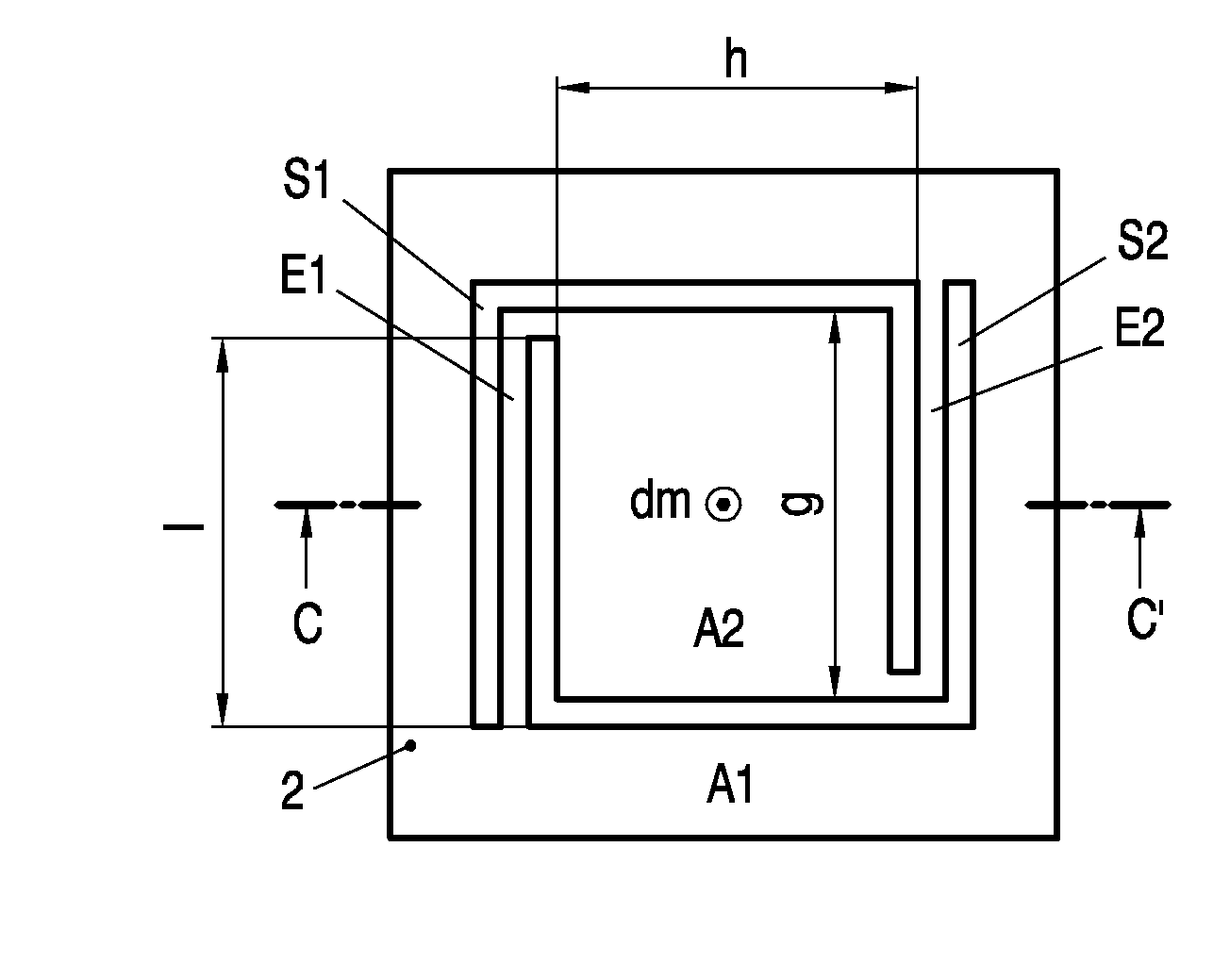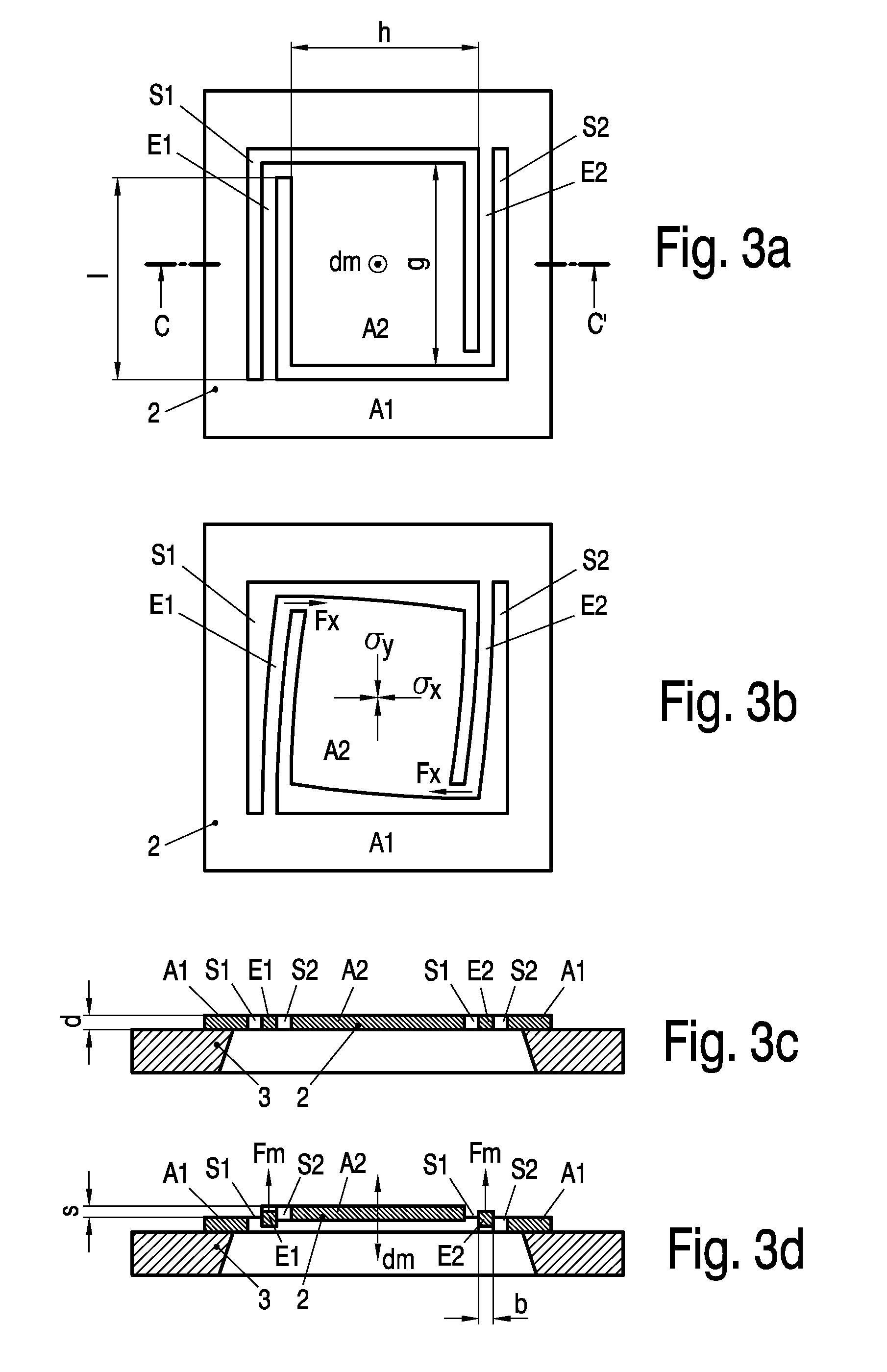Membrane For a Mems Condenser Microphone
a technology for condenser microphones and membranes, applied in the direction of diaphragm construction, electrostatic transducers of semiconductor transducers, loudspeakers, etc., can solve the problem of certain amount of bending, and achieve the effect of increasing the cross section, reducing the influence of acoustic behavior, and increasing ventilation resistan
- Summary
- Abstract
- Description
- Claims
- Application Information
AI Technical Summary
Benefits of technology
Problems solved by technology
Method used
Image
Examples
Embodiment Construction
[0045]FIG. 3a shows a top view of a first embodiment of an inventive membrane 2, comprising first portion A1, second portion A2, and two elements E1, E2, having an effective length l, which connect said first A1 and said second portion A2. The two elements E1, E2 are spirally arranged and project counterclockwise from the second portion A2. The second portion A2 has the width g and the length h. The structure is manufactured by etching two U-shaped slits S1 and S2, which free the second portion A2 from the first portion A1 and at the same time form the two elements E1, E2. It can easily be seen that the significant sections of the elements E1, E2 are arranged parallel to the second portion A2. Finally the direction of movement dm is shown in FIG. 1 which normally projects from the planar membrane 2.
[0046]FIG. 3b shows the membrane 2 of FIG. 3a after the etching of the two slits S1, S2 when a planar tensile stress in x-direction σx and in y-direction σy, indicated with arrows, is wit...
PUM
 Login to view more
Login to view more Abstract
Description
Claims
Application Information
 Login to view more
Login to view more - R&D Engineer
- R&D Manager
- IP Professional
- Industry Leading Data Capabilities
- Powerful AI technology
- Patent DNA Extraction
Browse by: Latest US Patents, China's latest patents, Technical Efficacy Thesaurus, Application Domain, Technology Topic.
© 2024 PatSnap. All rights reserved.Legal|Privacy policy|Modern Slavery Act Transparency Statement|Sitemap



